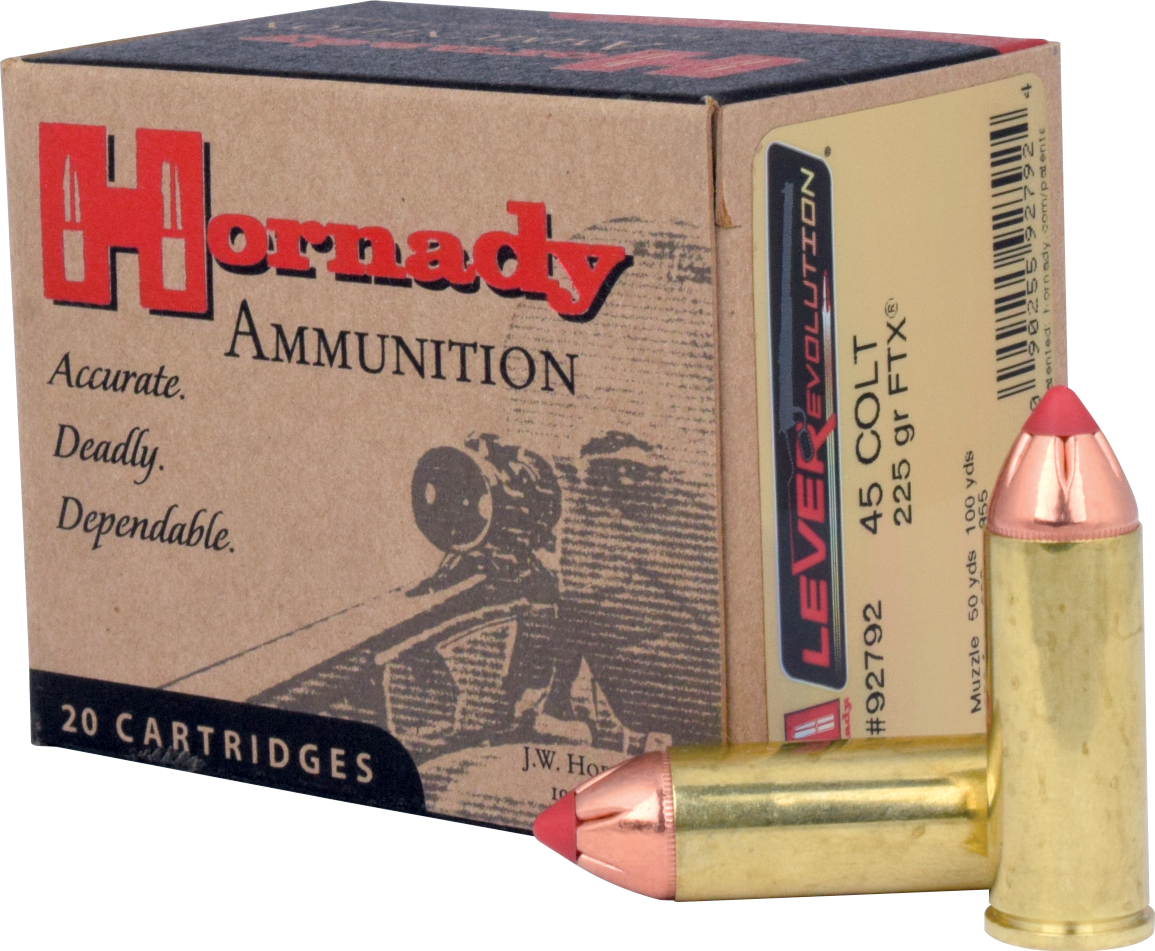
By Jim Dickson | Contributing Writer
Photos by author and Hornady
Tubular magazines present a problem for spitzer bullets as the point of the bullet is resting on the primer of the cartridge in front of it where recoil can push it forward like a firing pin.
When the French Lebel rifle came out with a tubular magazine, but used ammunition featuring a spitzer-type bullet, their solution was to make such a tapered bottleneck case that each round’s nose would be pressing on the next cartridge’s rim instead of the primer, hence the weird appearance of the 8MM Lebel cartridge, by today’s standards.
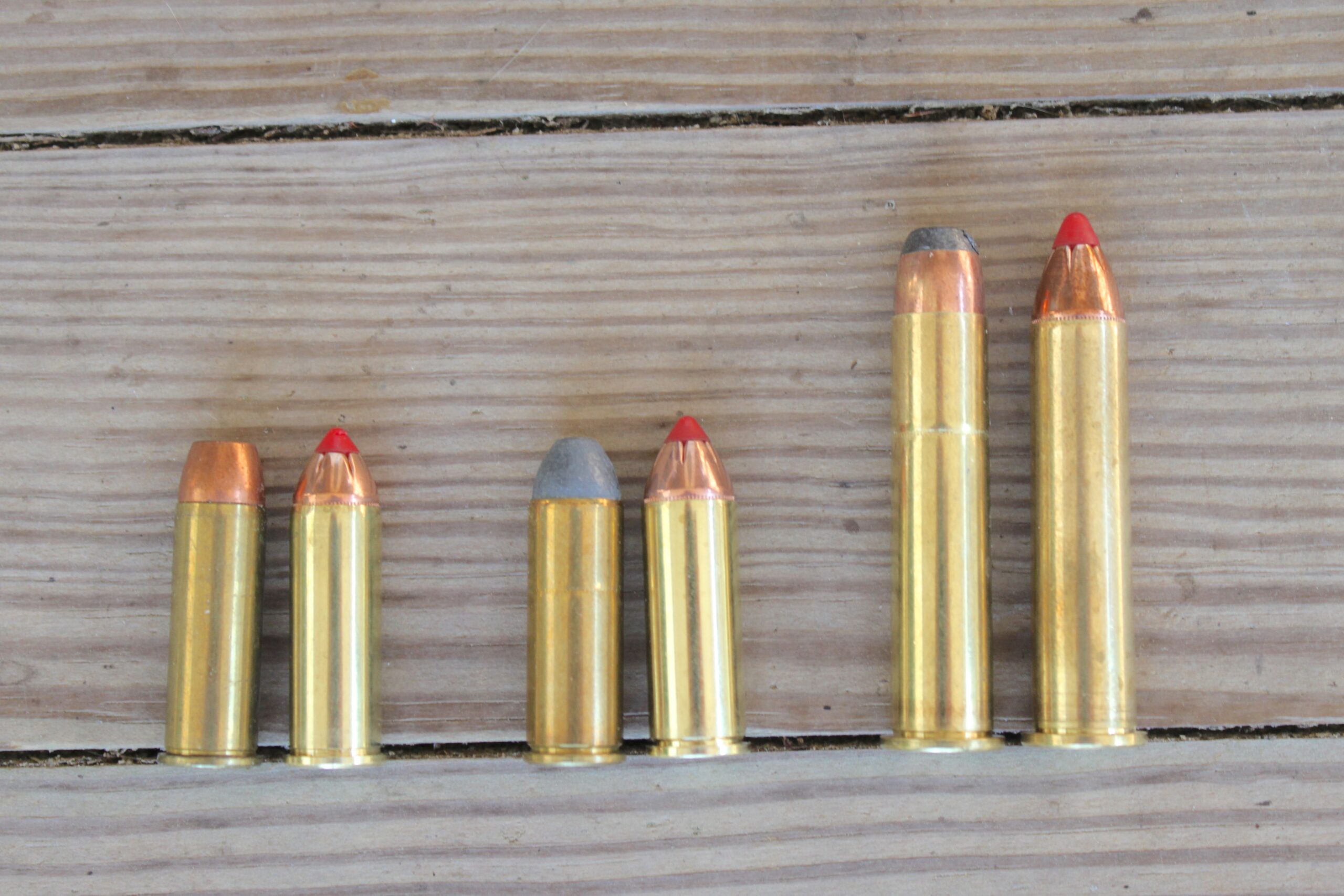
Lever rifles usually had tubular magazines and this meant that blunt nose bullets were mandated for safety’s sake lest you have one cartridge go off in the tubular magazine and set off the rest as it goes. While rare, I have seen a photo of a Winchester Model 71 in a .45 caliber wildcat which did just that and it was a horrendous blow up. I don’t know what happened to the shooter’s hand but judging from the look of what was left of the rifle it was not good.
Since most game is shot inside of 100 yards and 200 yards is often agreed upon as normally the limit the hunter should shoot at game, this may not seem so important. However, calculations used to make velocity tables are often made from theory and not actual measurements. A case in point is when the head of a small ammunition company actually set a chronograph out at extreme ranges and checked the results. He found that because air pressure resistance goes up as velocity increases, coupled with the poor ballistic shape of blunt nosed pistol bullets, the standard .44 Magnum loads were dropping below the velocity of the .45 Colt and .45ACP bullets after 50 to 75 yards.

The best solution to the problem was reached by Dave Emory, senior ballistic scientist at Hornady at the time. He developed a ballistic tip of elastomer that positively could not set off the primer in front of it as the gun recoiled. Called the Flex Tip, this enabled two important features. A more aerodynamic shape bullet for long range performance and more positive expansion at the lower velocities as the synthetic tip was driven back into the hollowpoint. To this was added the best progressive burning powders available so that the pressure would stay low enough for pistols, where applicable, yet take full advantage of the longer barrels of carbines and rifles to milk every bit of velocity out of the cartridge. Dubbed the LEVERevolution rounds because they revolutionized lever action performance, the new rounds offered greatly increased long range velocity and flatter trajectory.
The first LEVERevolution rounds were introduced in 2005 and the line has been expanded now to 14 cartridges with more on the way. The current offerings are: .30-30 Winchester, .357 Magnum, .25-35 Winchester, .308 Marlin Express, .338 Marlin Express, .348 Winchester, .35 Remington, .45-70 Govt.,
.450 Marlin, .444 Marlin, .41 Magnum, .44 Magnum, and .45 Colt.
(Editor’s Note: Hornady also offers a LEVERevolution load in .32 Winchester Special with a 165-grain bullet.)
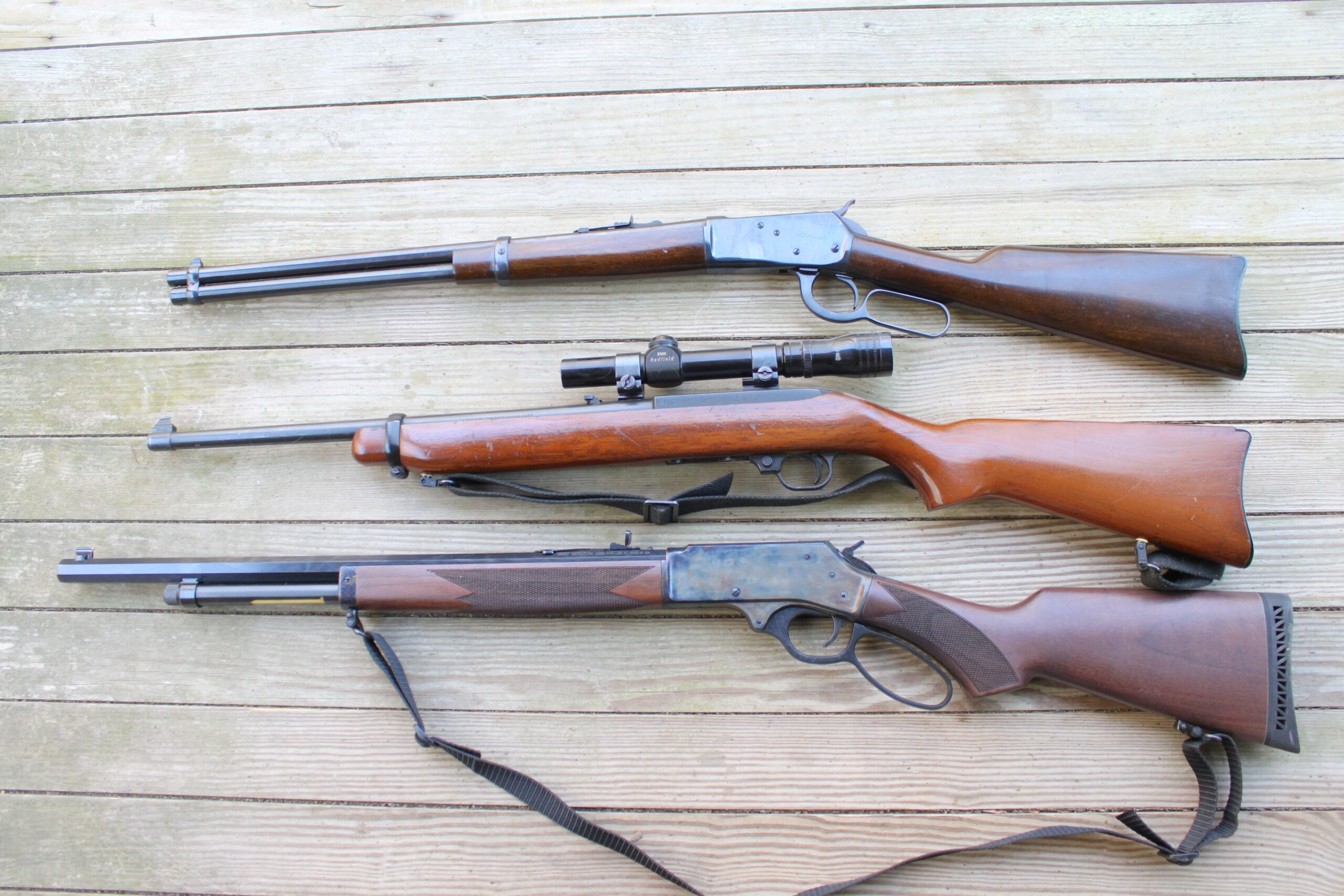
These rounds offer an increase in muzzle velocity up to 250 FPS and an increase in energy up to 40% over traditional lever action loads. Their patented FTX jacketed lead bullets and their Monoflex monolithic solid expanding bullets take Flex Tip technology to both types of modern bullet construction.
I had three boxes of each of three calibers to test. .45-70, .45 Colt and .44 Magnum. The .45-70 is held to a 1.25 MOA at 100 yards’ maximum by the factory although groups of 1 MOA have been fired. The factory has also gotten some 1 MOA groups out of scope-sighted .45 Colt and .44 Magnum rifles at 100 yards.
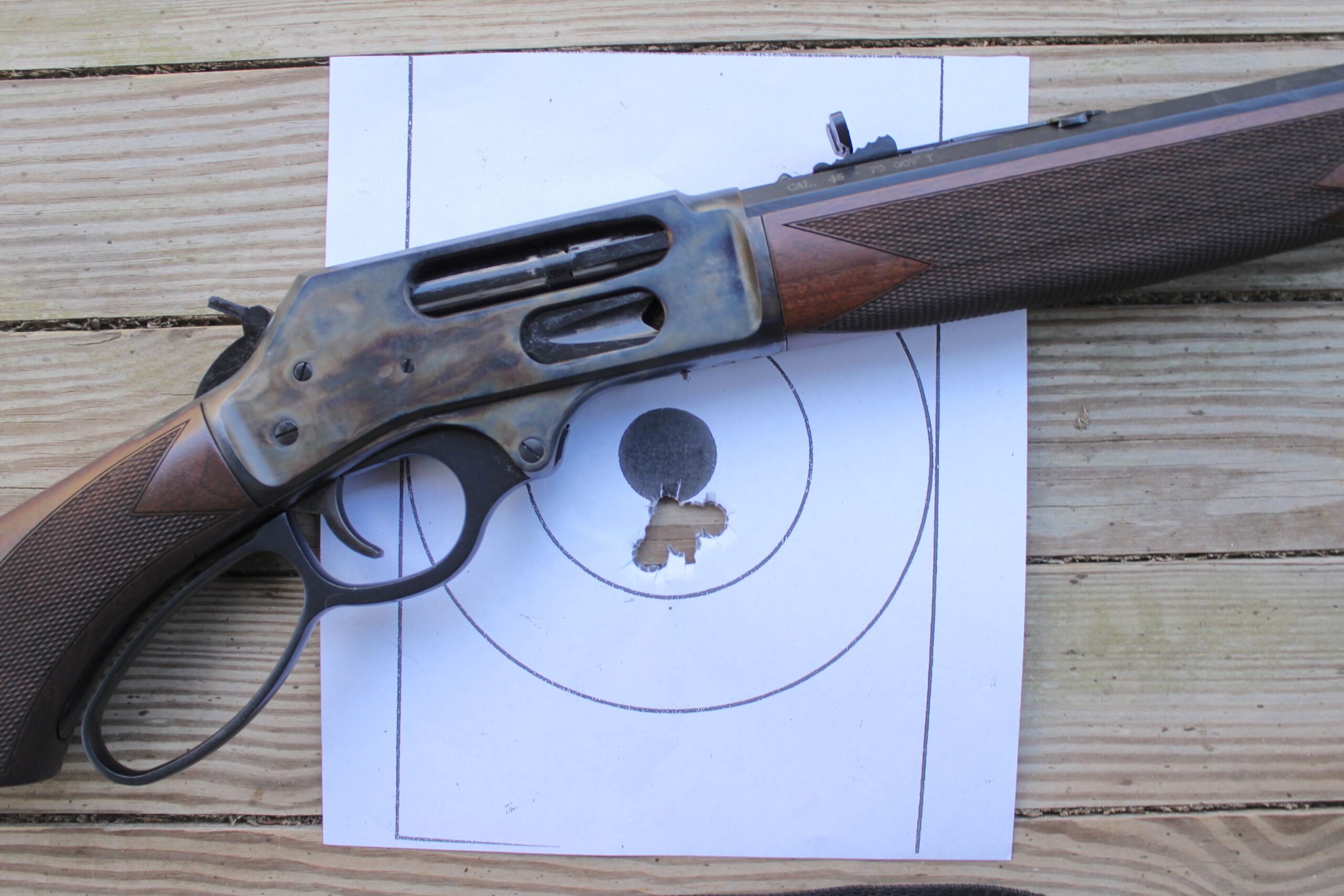
The .45-70 is safe for Trapdoor Springfields yet it has a 325-grain FTX bullet that leaves the muzzle at 2000 fps and when sighted in at 200 yards is 5.5 inches high at 100 yards, and at 300 yards is 23 inches low. That is a major improvement for the .45-70’s trajectory and should be much appreciated by Western Elk hunters. It is worth noting that the .405 Winchester was a blunt nosed 300-grain .40 caliber bullet at 2000 fps. With this load the 45-70 eclipses the performance of the famed .405 Winchester.
Since the .44 Magnum and the .45 Colt are handgun cartridges, the velocity shown on the box is what they do out of a revolver. Both the .45 Colt and the .44 Magnum have produced 1 MOA groups at 100 yards for the factory. The .45 Colt FTX 225-grain load is 960 fps out of a Colt Single Action Army revolver and at 50 yards has only dropped to 899 fps while it is still doing 855 fps at 100 yards. However out of a 20-inch barrel carbine it starts out at 1200 fps, a significant gain thanks to utilizing the proper powders to take full effect of the extra barrel length.
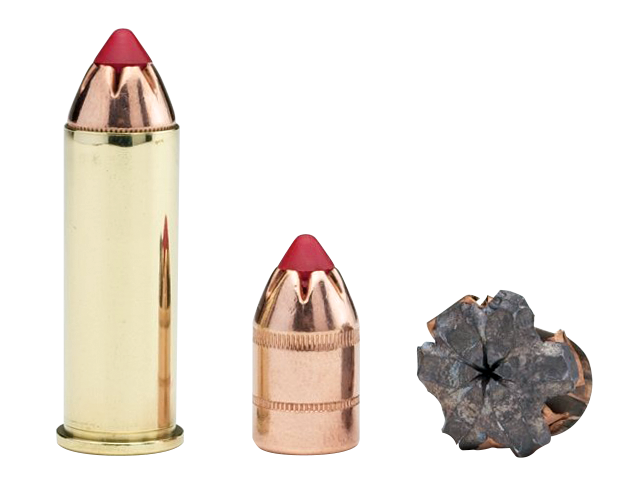
The .44 Magnum 225-grain FTX bullet leaves a pistol at 1,410 fps and has dropped to 1,233 fps at 50 yards and 1,102 fps at 100 yards. Out of a 20-inch rifle barrel it has a muzzle velocity of 1,800 fps though.
The reason that the .44 Magnum loses its velocity so much faster than the .45 Colt is because air resistance goes up with velocity and despite the improved shape these handgun bullets are still fat compared to a .30-06 spitzer bullet.
I tested the ammunition out of a Ruger semi-auto .44 Magnum carbine, a Rossi 92 carbine in .45 Colt, and an octagon barrel casehardened steel frame Henry .45-70. Functioning was flawless. I couldn’t get 1 MOA at 100 yards with the .45-70 Henry but it did deliver a five-shot 1.25 inch group.
I deemed 50 yards more reasonable for the handgun calibers and the .45 Colt Rossi 92 gave me a five-shot 1 3/8-inch group while the semi-auto Ruger .44 Magnum gave me a five-shot 1 7/8-inch group. I couldn’t be happier with the accuracy of these rounds in these guns.
I regard the Hornady LEVERevolution rounds as the most innovative advance in lever action ammunition of the 21st Century and I highly recommend them for rifles and for pistols where the caliber is applicable.



